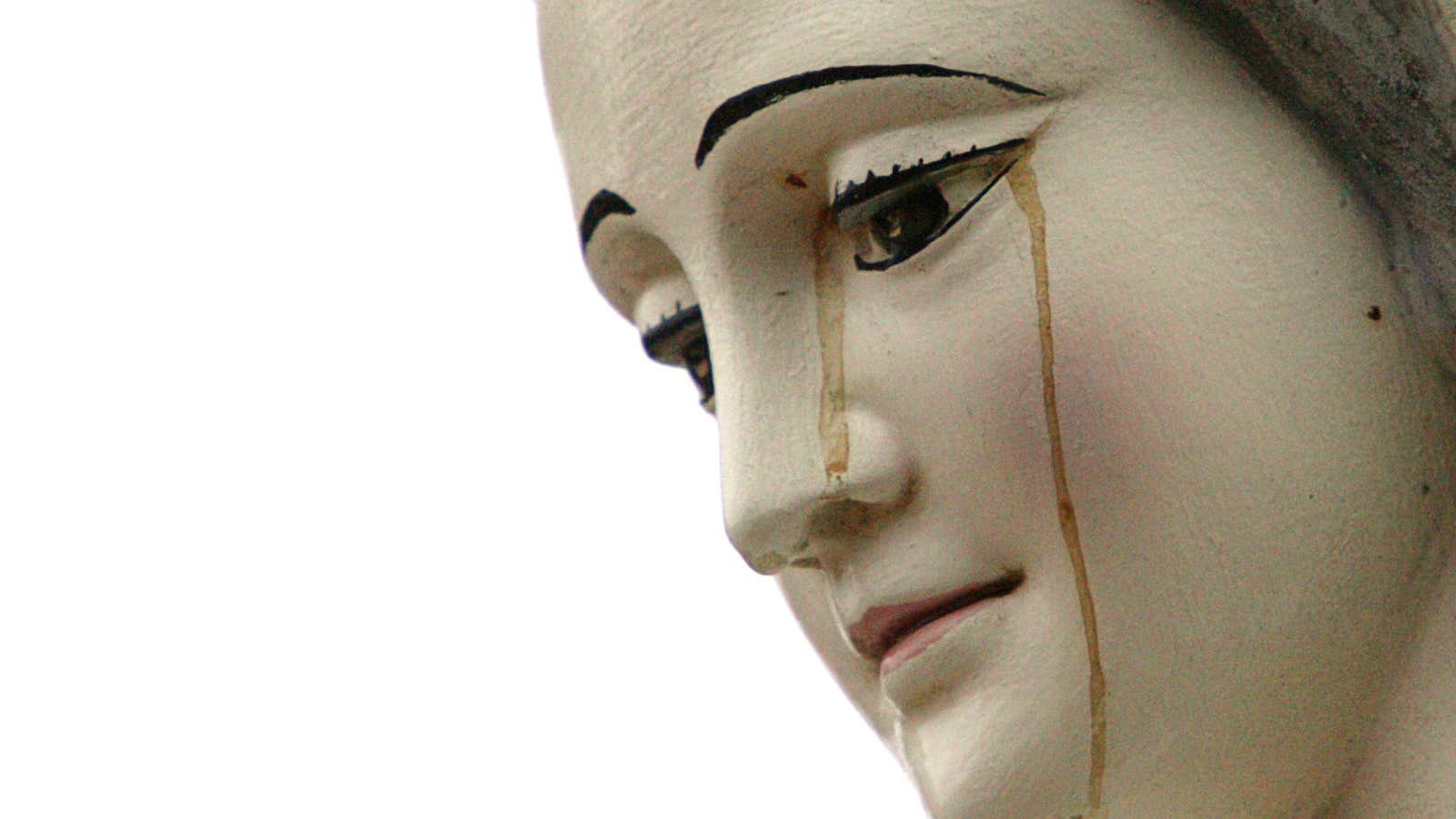When a patient walks into a therapist’s office, there’s no way to know just how upset he or she is feeling. A serious bout of depression in one patient could look like a bad day for another. Unfortunately, there’s no good objective measurement for emotions, but that could be about to change.
Scientists at the University of Colorado at Boulder and the University of Pittsburgh have discovered exactly what our brains look like when we’re feeling a negative or unpleasant emotion. Scientists think this blueprint of activity—called a brain signature—can even be used to predict just how bad people are feeling.
“With all of emotion it’s really difficult to define what we’re talking about, and it’s very subjective. Everyone may use a rating scale slightly differently,” Luke Chang, a neuroscientist and lead author of the paper, told Quartz. With this brain signature, “it’s not just that [parts of the brain] are active. Some of them are active and deactivated, relative to each other in different degrees. It’s a combination of when you take all of them together.” He compared this to looking at a city skyline: Though there may be other combinations of skyscrapers and smaller buildings, there’s only one pattern of buildings that matches Manhattan.
Because similar patterns of activity appeared in the vast majority of their test subjects, Chang, who is currently at Dartmouth, thinks this signature is a way of quantifying negative emotions in the general public, which had previously been unquantifiable. “The long-term hope is that if we had a more objective way to measure how we’re feeling, we might be able to better cater treatments to specific people.”
Researchers showed 121 adults images like a car crash to force people to feel upset, and took scans of their brains. “It’s not really a specific type of emotion,” Chang said, “It’s just basically ‘How bad does this image make you feel?'” They asked each of the participants to rank how upsetting the images were on a scale of 1 to 5, with 5 being the absolute worst. Simultaneously, his team took scans of their brains to get an overall image of their corresponding brain pattern. Next, they scanned the brains of over 60 people and showed them the same array of upsetting photos. They found that certain brain signatures could predict, with over 90% accuracy, how bad people would say they felt based on a particular image.
Next, Chang plans to investigate how this brain signature can help monitor the success of different therapeutic techniques for people with depression or anxiety. Theoretically, scientists could see changes in individual’s brain treatments to see if changes in behavior or therapy were actually working.
